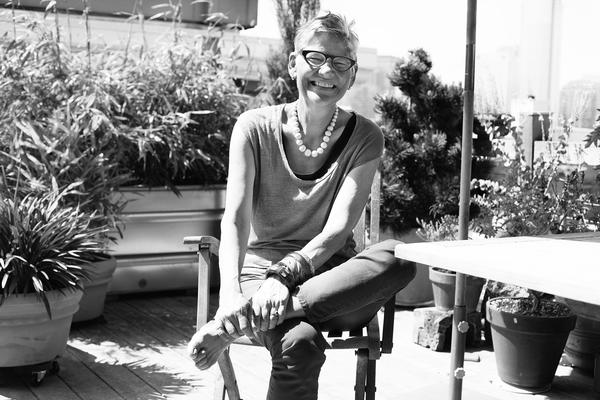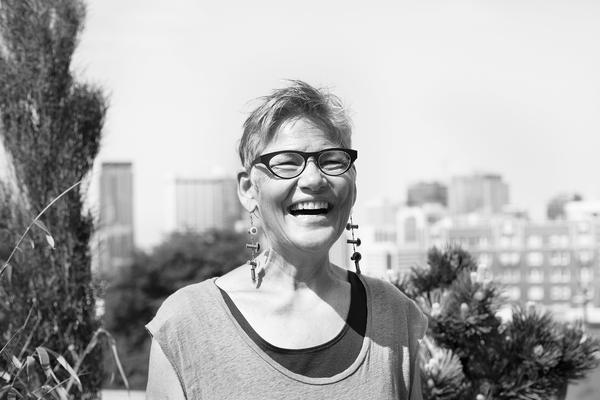Q&A Cathy Hillenbrand

Cathy Hillenbrand is one of those people you meet and never forget. Her energy is like no one else, she is fully aware of the history and people around her grinning from ear to ear she will share it with you. An enthusiast by nature and involved in so much of Seattle’s community and future and we hope you enjoy getting to know her like we did!
Vignettes: Tell us a little bit about what you do in your work and life.
Cathy Hillenbrand: Recently I have been very involved in urban issues on Capitol Hill – 10 years ago we moved from our house near St. Joe’s (18th E. and E. Aloha) to a four-plex overlooking the city just west of Seattle Central College. The Capitol Hill Light Rail station was being designed and planned, a three-block walk from our new home. I was a Seattle Arts Commissioner, co-chairing the Public Art Advisory Committee. I served on the Light Rail Review Panel for U-Link – the two stations soon to come on line on the Hill and at Husky Stadium. When I completed my terms on the Arts Commission in 2009, I joined a stake-holder committee working with Sound Transit on public outreach around our station’s Transit-Oriented Development (TOD) on Sound Transit’s surplus property. That led to formation of the Capitol Hill Champion which I chaired for five years – in that process I feel like I took crash courses in urban planning, transit planning, transit oriented development, the psychology of Sound Transit itself, city politics, property development, government relations. We worked with Sound Transit and the City to steward the neighborhoods’ vision for the re-development to come on top of the Light Rail Station. I’ve also been very involved in PPUNC (Pike-Pine Urban Neighborhood Council) working with the Pike / Pine conservation overlay and developers using that incentive as they build in Pike / Pine.
I joined the board of Capitol Hill Housing in 2010, and am currently the vice-chair. Capitol Hill Housing builds and preserves affordable housing in Capitol Hill and in other areas of the city. We do a lot of community development work in association with our housing. Our most recently completed project is 12th Avenue Arts, a complex project which combines affordable housing, two black-box theaters, retail, office space for non-profits, and a parking garage for officers of the East precinct. As my committee work, I serve on the Capitol Hill EcoDistrict Steering Committee.
My internal life involves dreaming and other explorations of my life mission – I am in a dream group which meets monthly and dreams collectively. I am still struggling with the desire to express my personal creativity. I have two adult sons, one living in Egypt and one living in Montreal. We travel to some amazing locations every year to gather our family together in one place. My husband is a free-lance cinematographer happily busy with frequent ever-changing projects, so my work is to continue figuring my own self out, to keep strong relationships with my sons, to speak out when I am called to do so, to peel away the unnecessary, and to have compassion for my personal inadequacies!
V: Do you collect art? If so, who do you collect? What draws you to their work?
CH: I’ve never considered myself an art collector, but someone who lives with art that compels me. My art collecting budget is negligible these days, so most of the work I own is not so recent. Some Seattle artists whose work I’ve collected and supported over time are Gloria Bornstein, Claudia Fitch, Sheila Klein and Annie Grosshans (performance, film and video). I published art and artists books throughout the 80’s at the Real Comet Press – ‘from comix to critiques’ – another way of engaging with art and art practices.
V: What’s your connection or relationship with the visual art community?
CH: I grew up around art – my family was very involved in the Birmingham Museum of Art (Alabama). My personal sense was that artists had true voices, and if I wasn’t an artist, I needed to be around them. In the 1970’s I was very involved with The Women Artists Group of the Northwest – we held an auction in 1976 to raise the money to bring Judy Chicago to Seattle to show at and/or along with her then husband Lloyd Hamrol. That was a galvanizing moment for many young women artists in Seattle. The Women Artist Group hung out, talked, had slide shows and potlucks, brought noted female artists of that time to Seattle. One of my favorite events was taking Lynda Benglis to the Crystal Steam Baths.
V: Who are some of the artists you are most inspired by currently and or in the past?
CH: Sadly I’m not following art adequately these days as my energy is absorbed with the density/urbanity/affordability debate. We did recently go see Zoe/Juniper’s durational performance at the Frye– I am crazy in love with watching Zoe move, and the quirkiness of her choreography. Juniper’s visual installation at the Frye is fantastic. Spending a slow Sunday afternoon at the Frye was a delicious luxury.
Artists I love, in no particular order, not just visual: Sue Coe. Constance deJong. Gloria Bornstein. Claudia Fitch. Marie Watt. Dario Robleto. Jeffrey Mitchell. Carrie Mae Weems. Buster Simpson. William Christenberry. Kara Walker. Laurie Anderson. Kerry James Marshall. Conceptual art of the 60’s and 70’s. Lauren Grossman. On and on. Leo Berk. It’s very individual.
I’m interested in meaning and visceral response, however that’s transmitted, in experience which moves me in a way I can barely grasp with words. I’m interested in depth, in process, in change, in perception at all levels.

V: Do you have daily or weekly rituals that you find important for you to take part in?
CH: Every morning I write down my dreams, what I remember of them. Every day I do the Sudoku puzzle in the Seattle Times. I’m learning to circumambulate my block daily no matter what else I do, clockwise, amazing what shows up in that brief meditation.
V: What do you find to be important here in Seattle’s creative community and the world at large?
CH: What I like about Seattle’s creative community after 40 plus years of being involved in it is its resilience and its refusal to lie down. What are people’s practices? How do people engage in what they love? I’m not particularly interested in the commodification of contemporary art we live with now – I am interested in the integration of art and life and how we shift consciousness on this planet.
Back to Articles
